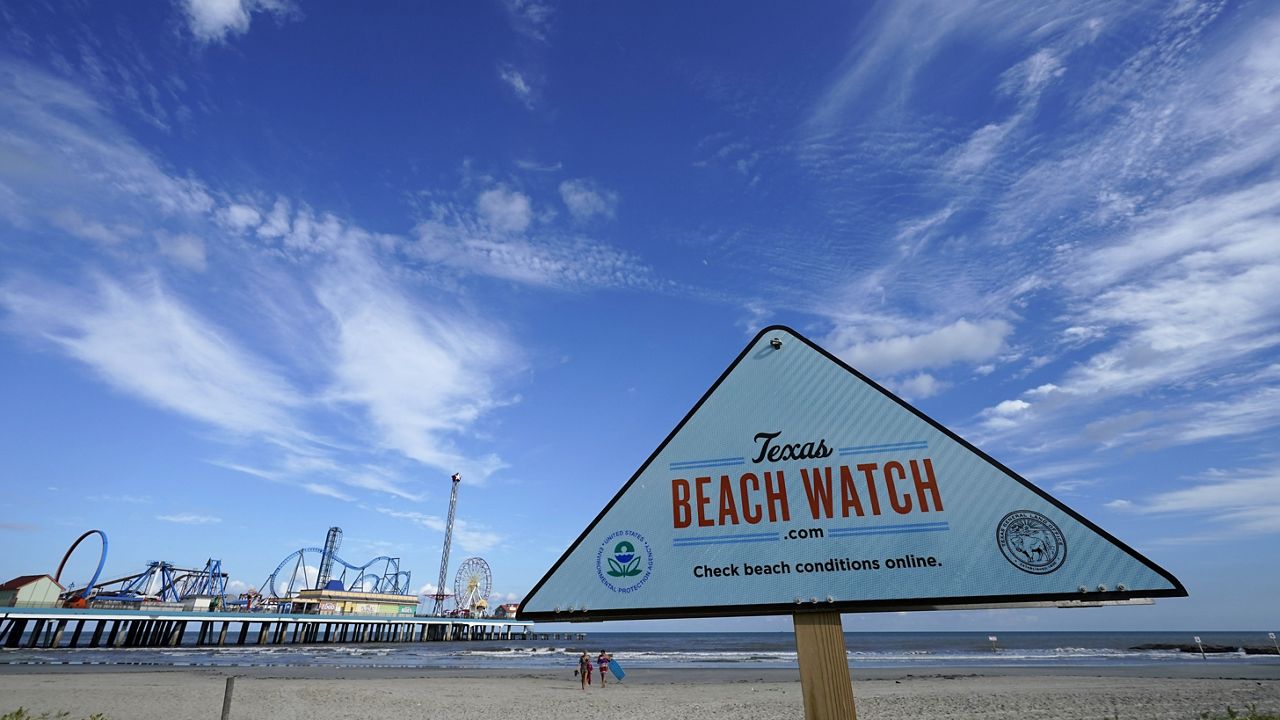AUSTIN, Texas — During the summer, water activities are bound to be on the agenda. But in Texas’ case, it might be best to stay out of beach waters. Environment Texas found that 55 beaches were potentially unsafe for swimming, at least once, when testing bacteria levels in 2022.
The polluted beaches pose a dangerous risk to swimmers, and Environment Texas urged that much more needs to be done to keep pathogens, an infectious agent, from seeping into its waterways.
“Even as Texans are back to enjoying the fresh sea breeze and splash of waves at the beach, pollution is still plaguing too many of the places where we swim,” said Luke Metzger with Environment Texas. “Now is the time to fix our water infrastructure and stop the flow of pathogens to our beaches.”
In Environment Texas’ “Safe for Swimming” analysis, it looked to see if fecal indicator bacteria levels exceeded the U.S. Environmental Protection Agency’s (EPA) “Beach Action Value” (BAV). To determine the water’s safety, it reviewed the amount of bacteria detected and the estimated illness rate of 32 out of every 1,000 swimmers.
Last year, eight beaches in Texas surpassed the safety benchmark. Environment Texas said Cole Park Beach in Corpus Christi had higher bacteria levels on 54% of days tested. Other beaches deemed likely unsafe at least one time during testing were Ropes Park, Poenisch Park, and Corpus Christi Marina in Corpus Christi and Texas City Dike and Seawall Boulevard in Galveston.
Environment Texas blamed polluted runoff and sewage overflows as the usual causes of contamination. The origin of runoff pollution significantly comes from livestock, as rain pushes their feces into waterways that are close by. This expands the contamination of fecal matter.
Cities such as Houston, Corpus Christi and Tyler are federally obligated to enhance their dated sewer systems, following thousands of clean water violations.
Nicole Powers, a researcher of bacterial contamination at Texas A&M University in Corpus Christi, is aware of the major health risks this water pollution has on the public. She stated, “it is important to do what you can to protect yourself against potential fecal contamination in recreational waters; for instance, check TexasBeachWatch.com for recent water quality trends, and avoid getting in the water with open wounds on your skin or near storm drain outfalls.”
Every year, there are approximately 57 million cases of people who’ve become ill from swimming in oceans, lakes, rivers and ponds, according to scientists. People can experience nausea, diarrhea, ear infections, and rashes when exposed to harmful bacteria.
“More than 50 years ago, our nation resolved that we would make all our waterways safe for swimming,” said Luke Metzger. “It is time for Texas officials to commit themselves to that goal and build on the progress of the bipartisan infrastructure law to get there.”
Read the report for more details on their recommendations to stop sewage overflows and runoff pollution.



